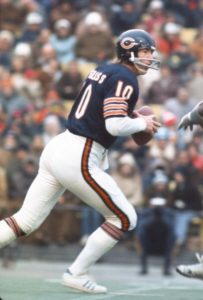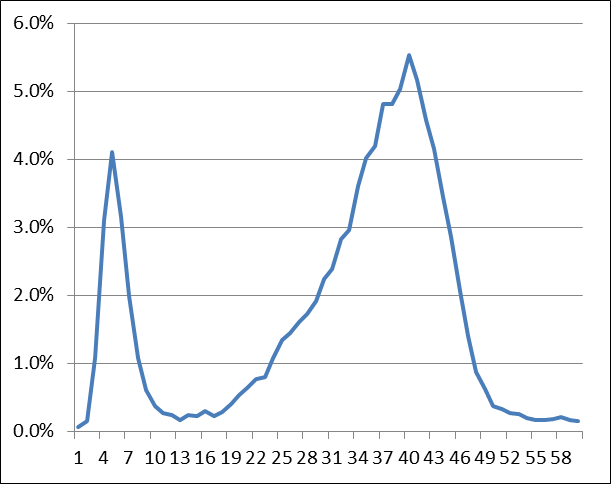How do you identify who is a rushing quarterback? On the surface, rushing yards per game seems like a pretty simple and easy way to do it. Michael Vick is the career leader in rushing yards per game by a quarterback, at 42.7. [1]Although Spec Sanders would be number one if you were inclined to label him a quarterback. Robert Griffin (39.8), Cam Newton (39.6), Russell Wilson (34.1), and Colin Kaepernick (33.3) are the next five quarterbacks on the career rushing yards/game list after Vick. [2]Bob Hoernschemeyer, Tuffy Leemans, and Charley Trippi also all averaged more than 25 passing yards per game and at least 35 rushing yards per game.
That seems to work pretty well, I suppose. But what about Bobby Douglass? He averaged 40.5 rushing yards per game with the Bears in 61 games but only 45 starts; he played in 30 more games the rest of his career that torpedoed his career average to 29.2. Or Greg Landry, who averaged 24.5 rushing yards per game with the Lions, but whose career averaged is only 18.5 because of time spent as a backup.
And here’s the really tricky part. Today’s quarterbacks pass more than ever. If a quarterback runs 6 times and passes 34 times in 2018, does that make him less run-happy than a quarterback who ran 6 times and passed 24 times in 1981? I think it might: the 1981 QB ran on 20% of plays, while the 2018 QB will run on 15% of his plays. But it is not necessarily intuitive (or correct) to identify rushing quarterbacks by how much they rush for relative to their passing.
So that’s what I did today: I calculated both the rushing yards per game and the rushing yards per pass attempt career averages for all quarterbacks with at least 1,000 pass attempts. Here’s how to read the table below (which shows the top 100 rushing quarterbacks by this metric), using Bobby Douglass as an example. Douglass rushed 410 times in his career for 2,654 yards, a 6.47 YPC average. He played in 91 games, meaning he averaged 29.2 yards per game. He threw only 1,178 passes, however; as a result, Douglass averaged an incredible 2.25 rushing yards for every pass attempt in his career. That’s the best in NFL history, and Vick is the only one who is even close. [continue reading…]
References
| ↑1 | Although Spec Sanders would be number one if you were inclined to label him a quarterback. |
|---|---|
| ↑2 | Bob Hoernschemeyer, Tuffy Leemans, and Charley Trippi also all averaged more than 25 passing yards per game and at least 35 rushing yards per game. |



